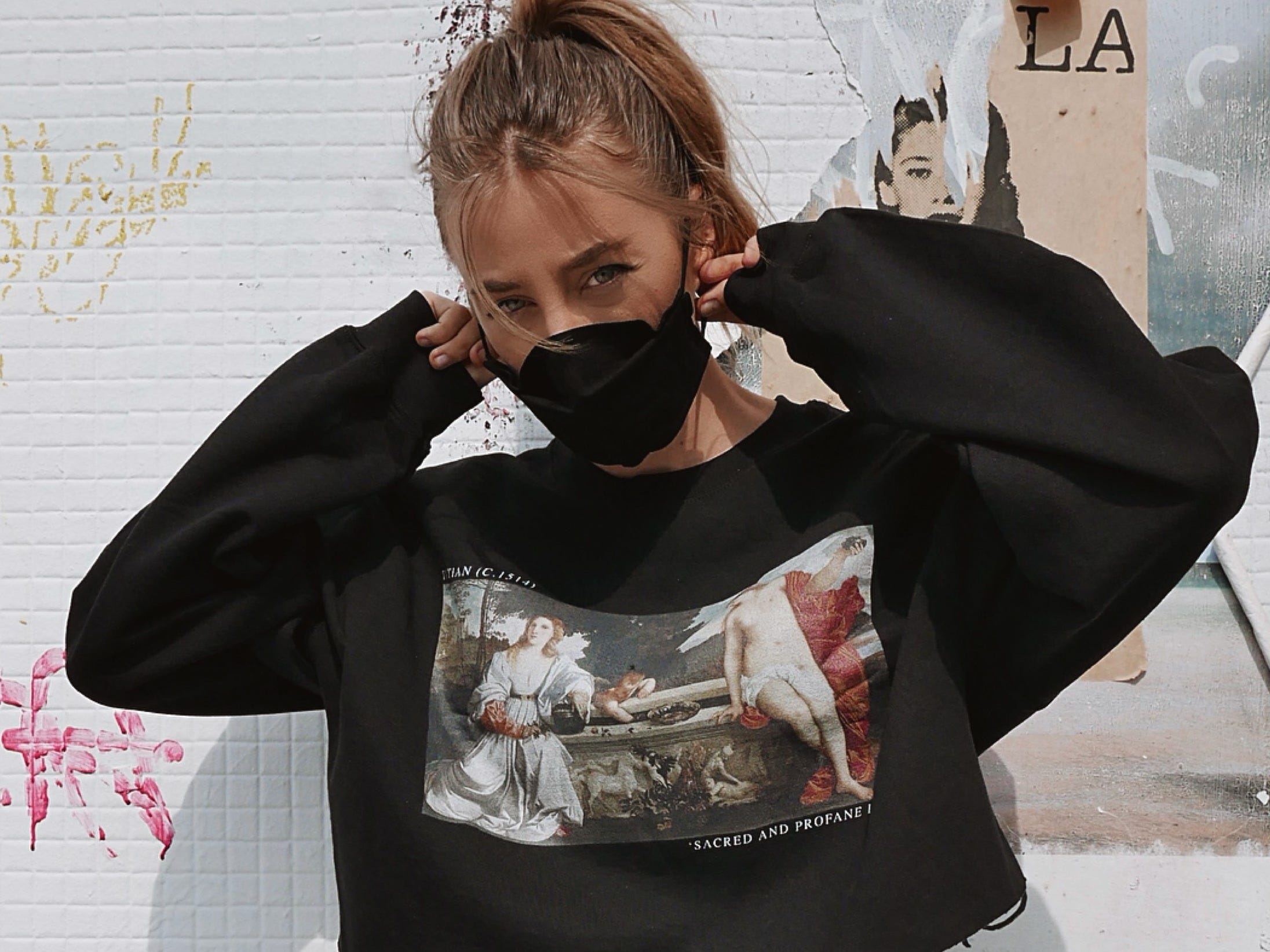- Marketers and digital creators are adjusting to changes in the influencer-marketing industry as the coronavirus continues to spread globally.
- As with most businesses in the ad industry, professionals have trimmed budgets, canceled events, and looked for alternative revenue streams.
- Several months in, brand deals are slowly starting to trickle back and creators are adjusting to a new normal in their careers.
- Business Insider spoke with influencer-marketing professionals across the industry to better understand how they are adjusting their businesses to continue to earn a living during the coronavirus pandemic and the resulting economic turmoil.
- Subscribe to Business Insider’s influencer newsletter.
This post will be added to when new information becomes available and was last updated on September 1.
As the near-term effects of the coronavirus outbreak continue to be felt across the global economy, businesses and creators in the influencer-marketing industry are doing their best to adapt.
At first, influencers saw many of their sponsorship deals shut down and events cancelled. As the weeks went on, many shifted their focus to alternative revenue streams that allow them to continue to earn a living without leaving their homes.
Influencer-marketing agencies also saw brands postpone campaigns, while engagement on social-media posts was higher than normal as more consumers spent time in physical isolation. Advertisers discovered that the influencer-marketing business model could be particularly well-suited to a time in which DIY ad content filmed at home remains viable while commercial photo shoots were shut down.
Now several months into the pandemic, some influencers are seeing their industries slowly bounce back. Some niche influencers and content have also seen new surges.
Business Insider spoke with influencer-marketing professionals across the industry to better understand how they are adjusting their businesses during the coronavirus pandemic and the resulting economic turmoil.
At first, brands cut ad budgets and deals began to fade during the start of the outbreak - but they're slowly coming back
At the beginning of the outbreak, influencers who earn money through sponsorships began to experience a steep decline in business.
Sponsored posts on Instagram fell from representing 35% of influencer content in mid-February to 4% of creator content in mid-April, according to a report from the marketing-analytics firm Launchmetrics.
Read the full post: Data reveals how large the decline in paid Instagram influencer posts has been in recent weeks, as the ad market sputters
For travel and event-based creators whose content depends on being able to leave their homes, the sponsored deal drop off was devastating. The travel industry was "holding their breath," and companies were reluctant to take on any new deals, which impacted creators' income.
Read the full post: Coronavirus is 'impacting all talent' on Instagram as brands cancel influencer-marketing deals and paid events get put on hold
Many brands postponed influencer-marketing campaigns in an effort to cut costs and avoid appearing insensitive during the public-health crisis.
For creators, it was unclear when - and if - these sponsored content opportunities would return.
Some brands delayed campaigns so they could make logistical adjustments to influencer work that once required travel or on-site production. Others pushed back launch dates to retool campaign messaging that was written before the coronavirus outbreak and felt out of touch.
Read the full post: 'We really need to adapt if we want to survive': Influencers and marketers break down how ad spending has changed and the future of 'paused' brand deals
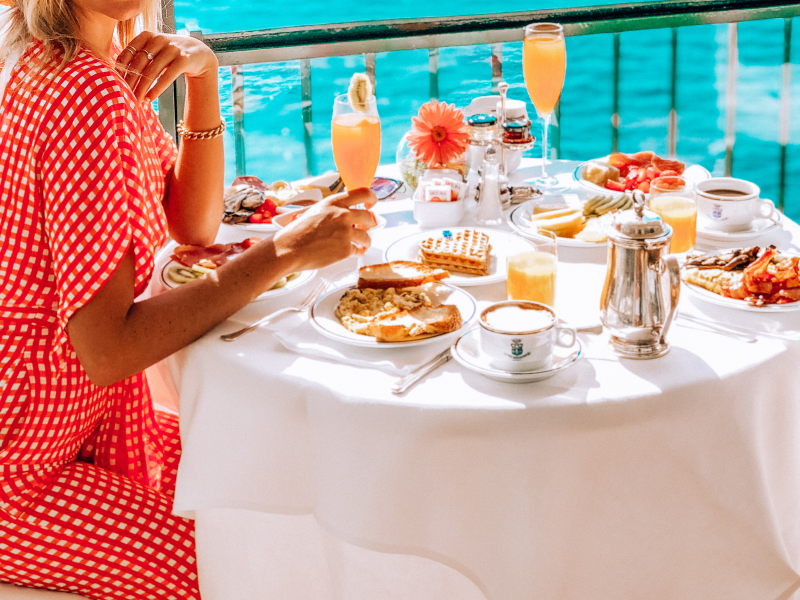
But by June and July, influencer brand deals started to slowly rebound as industries started to adapt their strategies to the current economy and environment.
For instance, sponsored content for travel and tourism brands hit an all-time low in April, according to data collected by Izea. By July, those trends slowly started to take a turn and sponsored content for travel and tourism rebounded by 34%.
Read the full story: Influencers are seeing a rebound in travel and tourism sponsored content deals. But controversy has come with it.
Industries like fitness and houseplants have seen spikes in engagement and direct-to-consumer sales
While some influencer categories, like fashion and travel, were hit hard by the pandemic, others saw surges.
Some fitness creators, for instance, have seen a boost in business. These creators often focus on direct-to-consumer services, rather than relying on brand partnerships for revenue. And with an increased interest in at-home work out programs amid the pandemic, some of these fitness creators have seen an increase in sales and overall engagement online.
Read the full story: Fitness influencers have seen a surge in sales of direct-to-consumer workout services, as brand deals slump amid the coronavirus pandemic
Houseplants - like at-home work outs - have seen a spike in sales and interest during the pandemic. And the influencers in this niche, referred to as "plantfluencers," have both benefited from and contributed to this trend.
"We have seen a huge uptake in interest in these types of accounts since lockdown," said Sarah Penny, head of content for Influencer Intelligence, an influencer marketing and data analytics platform.
Christopher Griffin (@PlantKween), a plantfluencer based in New York, saw their Instagram follower count grow by over 150,000 followers in total since March. Griffin works closely with Horti, a local plant store in Brooklyn which also runs an e-commerce subscription service.
Other plant influencers have partnered with brands like Nissan and The Sill (a popular DTC houseplant brand), while some have launched their own businesses and master courses during the pandemic.
Read the full story: Houseplant sales are booming and so are 'plantfluencers,' the social-media creators sharing plant tips, products, and content
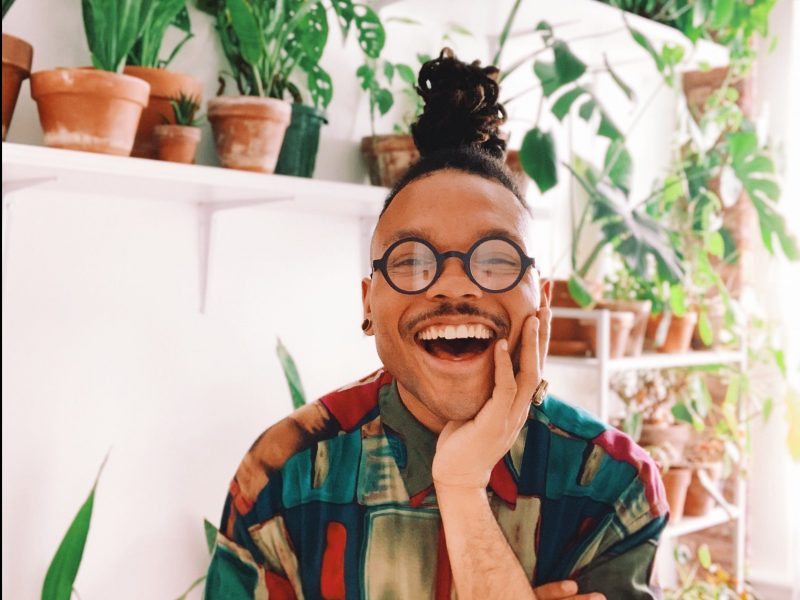 Foto: Christopher Griffin, @PlantKween on Instagram Source: PlantKween
Foto: Christopher Griffin, @PlantKween on Instagram Source: PlantKween
Besides at-home fitness and plants, there were other content topics that saw surges that may not have been as expected.
In the period from March to August, "insurance" had the highest growth rate among influencers of any content topic, according to data collected by the social-media marketing company Socialbakers.
Influencers are also posting more paid content about recipes and community issues. Socialbakers broke down these categories with the biggest increase and decreases between March and August.
Read the key takeaways: 'Insurance' has surged the most among Instagram influencers of any content topic during the pandemic. Here are the others with the biggest increases and decreases.
While the efficiency of influencer-marketing campaigns hit a low point across all industries in April, according to Socialbakers, industries like healthcare and gambling have had highly efficient influencer campaigns in the last few months.
Read more from the report: Healthcare has been the most efficient category for Instagram influencer marketing during the pandemic. Here are the other top performers.
Influencers and marketers have had to shift strategies as a way to continue earning a living
While sponsored content has long been a predictable (and essential) source of income for digital creators, the industry has matured well beyond branded posts. And as brand deals were cut, many influencers turned to other revenue streams.
The creator industry now includes a slew of non-ad-revenue opportunities, including merchandise sales through companies like Fanjoy, e-commerce affiliate revenue through platforms like rewardStyle, recurring subscription income through services like Patreon, and a variety of other categories.
Read the full post: The influencer economy hasn't been destroyed by the advertising meltdown, as creators make money from merch, subscriptions, and even personalized shout-outs
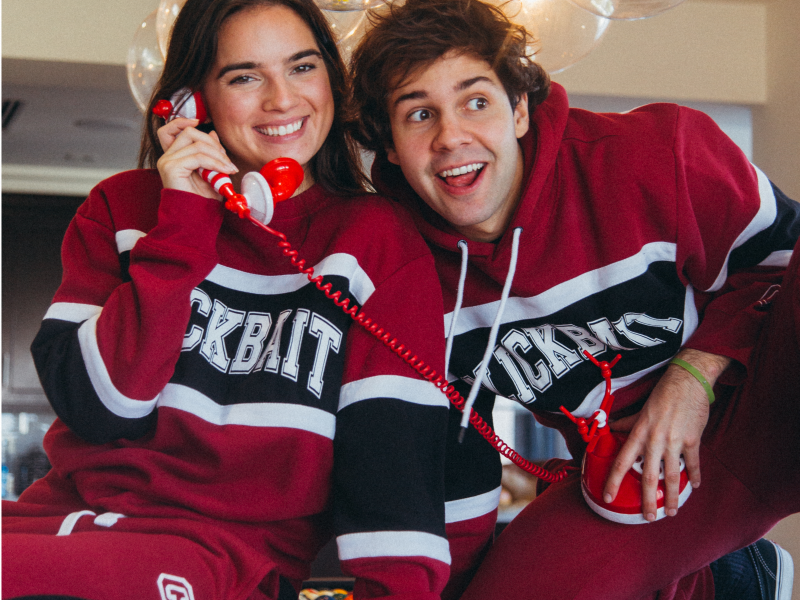
Some publishers and creators began leaning into membership programs that offer a dependable source of revenue separate from the volatile ad market.
The YouTube content company FBE, which has over 33 million subscribers across its network of YouTube channels, relaunched its membership program in May as part of a push to diversify its earnings outside of advertising.
"I've been pretty open about calling this an RPM crisis," the company's CEO Marc Hustvedt said. "In some cases this is 40% to 60% down from where we were right before the whole quarantine began. As you look to diversification of revenue and why that's important - especially when you're seeing real compressions of CPMs right now - you see why it's even more important to not be reliant on that single revenue stream."
Read the full post: 8 ways YouTube and Instagram influencers are earning money besides advertising, as brand sponsorships stall
Other digital creators are tapping into alternative revenue streams like consulting, teaching, and coaching, which fall outside the norm of what typically constitutes influencer work.
"I think focusing on the long term, and setting adjusted and realistic goals every day to keep you focused and not distracted by short-term blues, helps me a ton," said Christina Vidal, an Instagram influencer.
To stay afloat financially, Vidal decided to pivot and focus on what her audience would be more interested in right now, like easy recipes and a quarantine gift-giving guide.
Vidal was not alone in having to make drastic changes to her content.
Lindsay Silberman, a travel influencer with 168,000 Instagram followers, told Business Insider she has been leaning into beauty tips, loungewear recommendations, and at-home workouts on her blog and Instagram.
Read the full story: Travel Instagram influencers are finding new ways to earn money with the industry frozen and are moving into categories like food and fitness
Courtney Trop, a fashion Instagram influencer with 340,000 followers, launched her own CBD brand during the pandemic. Her brand now makes up 50% of her income after her fashion brand deals fell.
She said that launching her own brand became her financial "saving grace."
Read the full post: How a fashion Instagram influencer launched a CBD brand during the pandemic to make up for lost income from brand deals
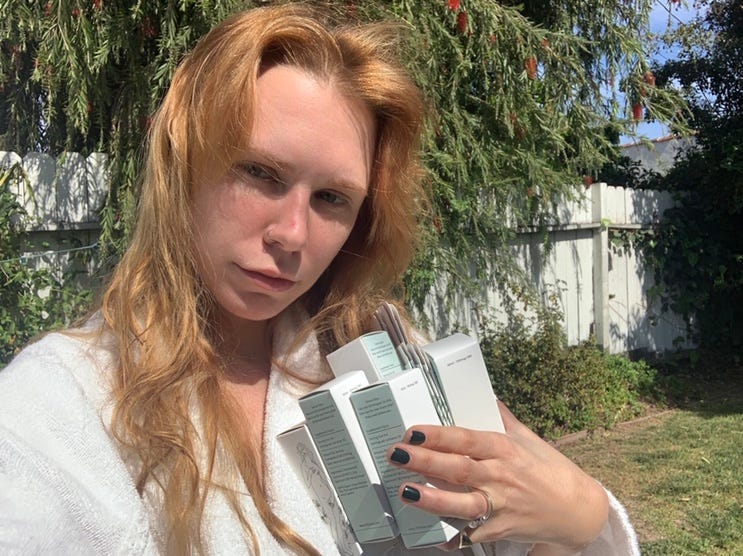
As production companies shut down photo and video shoots in order to adhere to social-distancing measures, some brands have been turning to influencers to create ad content. The influencer-marketing agency Obviously told Business Insider that it's seen an increase in the number of brands looking to hire influencers specifically for content creation.
"For the first time, big brands aren't able to make those big-budget television ads," said Karyn Spencer, the senior vice president of partnerships at Whalar, an influencer-marketing agency. "You don't need that full-blown production anymore. YouTubers taught us that."
Read the full story: Some brands are hiring influencers as a 'one-stop shop' for video and animation as production studios shut down - and finding they're a lot cheaper
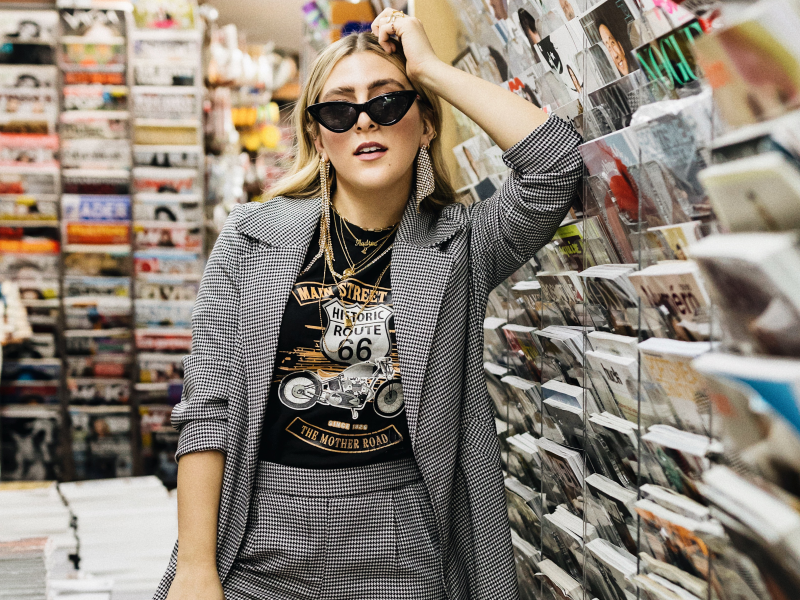
Influencer marketers say engagement on sponsored and unpaid posts soared
As more people stayed home in an effort to help contain the spread of the new coronavirus, social-media use increased. Influencer marketers have seen a spike in ad impressions and user engagement on sponsored posts on apps like TikTok and Instagram.
The influencer-marketing agency Obviously said it's seen a boost in the number of "likes" on sponsored posts on Instagram.
"Everyone is home and is on TikTok actively, and everyone's social distancing," said Mae Karwowski, the company's founder and CEO. "We're just consuming so much more content."
Read the full story: Influencer marketers say sponsored Instagram posts have had views, likes, and comments sharply increase the past 2 weeks
Many influencers have also reported an uptick in engagement and views on unpaid social-media posts.
In a survey of 389 digital creators conducted by the marketing firm Influence Central, creators reported seeing increases in audience engagement across social media platforms like Instagram, TikTok, Facebook, Pinterest, and their personal blogs.
Read our key takeaways from the survey: A survey of 389 influencers reveals how viewer habits on Instagram, YouTube, and TikTok have changed in recent weeks
Live content is taking off across social media, and some influencers are cashing in
Interest in live video has also spiked in recent months, and creators, marketers, and tech platforms are finding new ways to make money from livestreaming.
Influencers can earn hundreds - or even thousands - of dollars by promoting a product or appearing in a brand's livestream on platforms like Instagram, Facebook, YouTube, or Twitch.
"People are more apt to spend 30, 60, or 90 minutes on an influencer or branded livestream, whereas they're typically only engaging with a static photo on a feed for a couple seconds," said Ellie Jenkins, an influencer-innovation manager at Mavrck. "That long-term engagement is really powerful for brands."
Read the full story: Instagram influencers can earn thousands of dollars for a sponsored livestream, but they have to get risk-averse brands on board
Tubular Labs looked into how consumers have engaged with livestreamed videos.
The firm found that real-time news, music, gaming, and animal livestreams all saw significant growth in viewership on platforms like Twitch and YouTube.
Read our key takeaways from the report: A new 22-page report breaks down how livestream video has surged in the last month on YouTube, Twitch, and other platforms. Here are the 4 key takeaways.
Relatedly, influencers surveyed by the marketing platform Klear said they've been leaning into Instagram's "Live" and "Stories" features.
"I'm definitely using Stories a lot more," said Erica Chan Coffman, an Instagram influencer who runs the DIY website Honestly WTF. "There's been an exponentially higher amount of Story views and likes. People are tagging me in Stories, saying 'Look at the thing I created using the HonestlyWTF tutorial,' and I'll repost it."
Read our key takeaways from the survey: A new survey of 1,021 Instagram influencers shows how the social-media platform has changed in recent weeks and what areas they're leaning into
"With everyone being at home during this time, influencers and brands have really made it a priority to create more of a conversation in Instagram Stories to further connect with their audience," said Britney Turner, a lifestyle influencer with 27,000 followers on Instagram and content creator coach.
She broke down the most effective way to use Instagram Stories, including how many slides to include and what content to share.
Read the full story: How to create Instagram Stories with high engagement and reach, according to an influencer coach and an analytics company
Brands also started to focus on philanthropy and 'feel good' messaging for influencer-marketing campaigns
With consumers stuck at home and spending more time on social media, the brands that have continued to market on social media have seen increased engagement on their sponsored Instagram posts, according to the influencer-marketing agency Obviously.
That provides an incentive for brands that can keep buying advertising to do so - especially because it's likely cheaper for them now. But there is still the question of how to continue marketing without risking a brand's image.
Mediakix, an influencer-marketing agency that connects brand with influencers, published a report advising brands on how to use social media during the pandemic.
Read the full story: An influencer-marketing agency shares its guidelines for brands that want to run social-media campaigns during the pandemic and what to avoid
Brands that are continuing to run marketing campaigns are treading softly in order to avoid appearing insensitive or opportunistic. Many are leaning on influencers to strike the right tone.
"Brands are being very sensitive not to be tone-deaf at this time," said Vickie Segar, the founder of the influencer-marketing firm Village. "When you're working with influencers, they take every product and they put it into context. Their context right now is they're stuck at home."
Read the full story: 7 key lessons for brands that want to run sponsored social-media posts during a crisis without appearing tone deaf, according to an influencer-marketing exec
Many brands are focusing on philanthropy and "feel good" messaging in recent ad campaigns.
For instance, the backpack company JanSport ran an influencer-marketing campaign focused on its charitable giving to the nonprofit World Central Kitchen.
"We wanted to really connect with students who are being displaced and also try to meet the needs of those students who rely on school for both a safe place to go during the day, and also nutrition," said Monica Rigali, the senior director of marketing at JanSport. "We just wanted to meet our consumer where they are right now. And we know they're on TikTok probably more than they should be."
In other categories of advertising like traditional TV commercials, brands like Toyota have been leaning into "feel good" messages of unity in place of more transactional messaging.
Read the full story: JanSport hired a Gen-Z 'think tank' to help launch a TikTok influencer campaign during the coronavirus pandemic without appearing tone deaf
